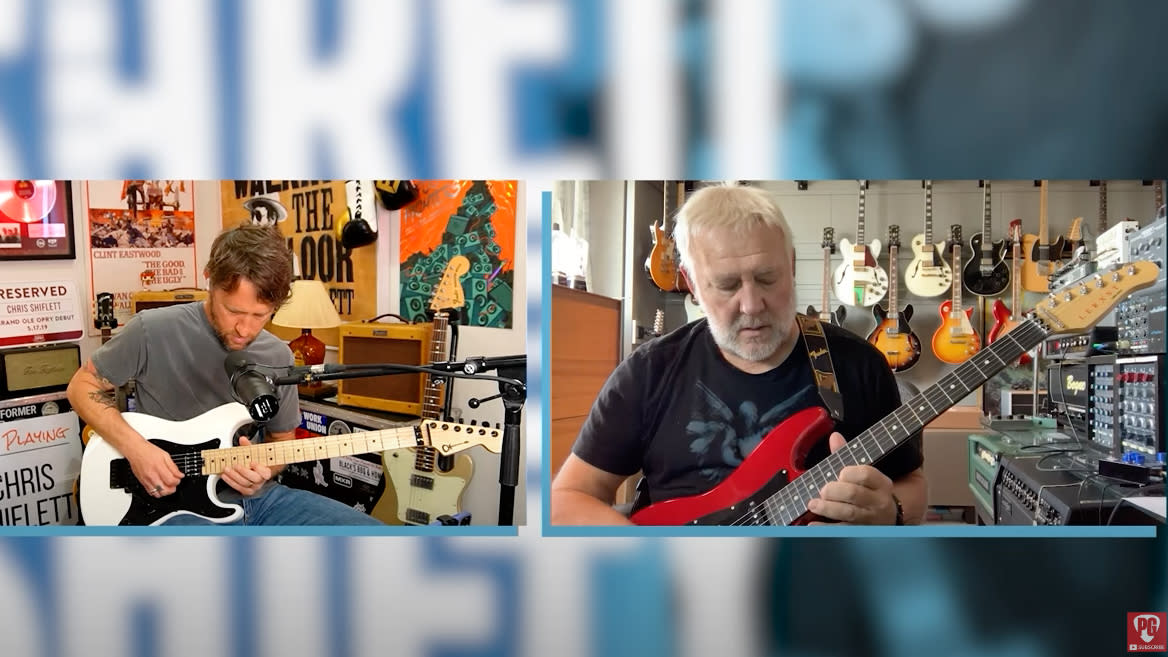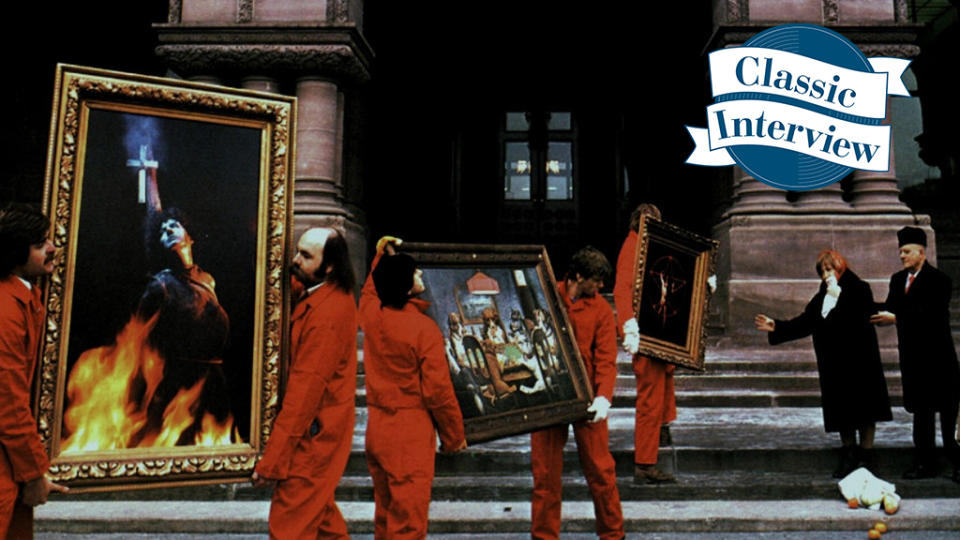Alex Lifeson teaches Foo Fighters guitarist Chris Shiflett the solo to Rush classic Limelight

- Oops!Something went wrong.Please try again later.
Foo Fighter Chris Shiflett has launched a brand new podcast learning from some of the greatest guitarists around and Rush icon Alex Lifeson is his first guest.
Shred With Shifty comes in association with Premier Guitar and kicks off with Lifeson teaching him his greatest Rush solo; Limelight. A haunting emotive prog-rock classic. It's one of the finest guitar solos of all time.
We've talked about the incredible tone Lifeson summons on the song before, and now we can learn from Lifeson in his apartment's guitar den – a jaw-dropping room on the 24th floor of his Toronto abode.
"I've got 20 or 30 guitars here," says Lifeson. Who clearly saved some from last year's auction.
Read more

Alex Lifeson talks Rush Moving Pictures track-by-track
It's not all guitar lesson – there's plenty of interview goodness here as Lifeson talks about Rush's dedicated fanbase, the changes in Rush's sound and his guitar journey – including PRS, Gibson and the Hentor Sportscaster he used on Moving Pictures track Limelight.
"I would have been using a Marshall head and maybe my Marshall cabinets," Lifeson recalls. "I probably had one of the Marshall Club & Country [combo] amp – they were great. I saw Allan Holdsworth using those amps and he had such a great tone. That's why I ended up getting them.
"For pedals and effects I think I was using a Loft for that soft phasing," adds Lifeson. He's also fairly sure he wasn't using an Echoplex then: "We would have set up a tape loop for the delay… with the two-track tape. We did that a lot when we wanted to get longer delays because the digital delays were just coming [out] and they were pretty short. I don't think you could get more than 250ms back then."
The Loft Lifeson refers to was a chorus unit . "It was a company in New Hampshire that made them I think," recalls Lifeson. "It was like a chorusy phase unit with a very short delay – it had a really beautiful chorus effect and you could create that soft, gentle phasing as well."
Lifeson previously told MusicRadar in a track-by-track interview about Moving Pictures that the Limelight solo holds a very special place for him in his back catalogue.
“I’ve always maintained that the solo is probably my favourite of anything I’ve ever done," he told us. "If you can create a visual from a sonic standpoint, that’s really an art. The song has it, as does the solo.”
Check out the full interview and lesson above as Lifeson breaks down the solo.
